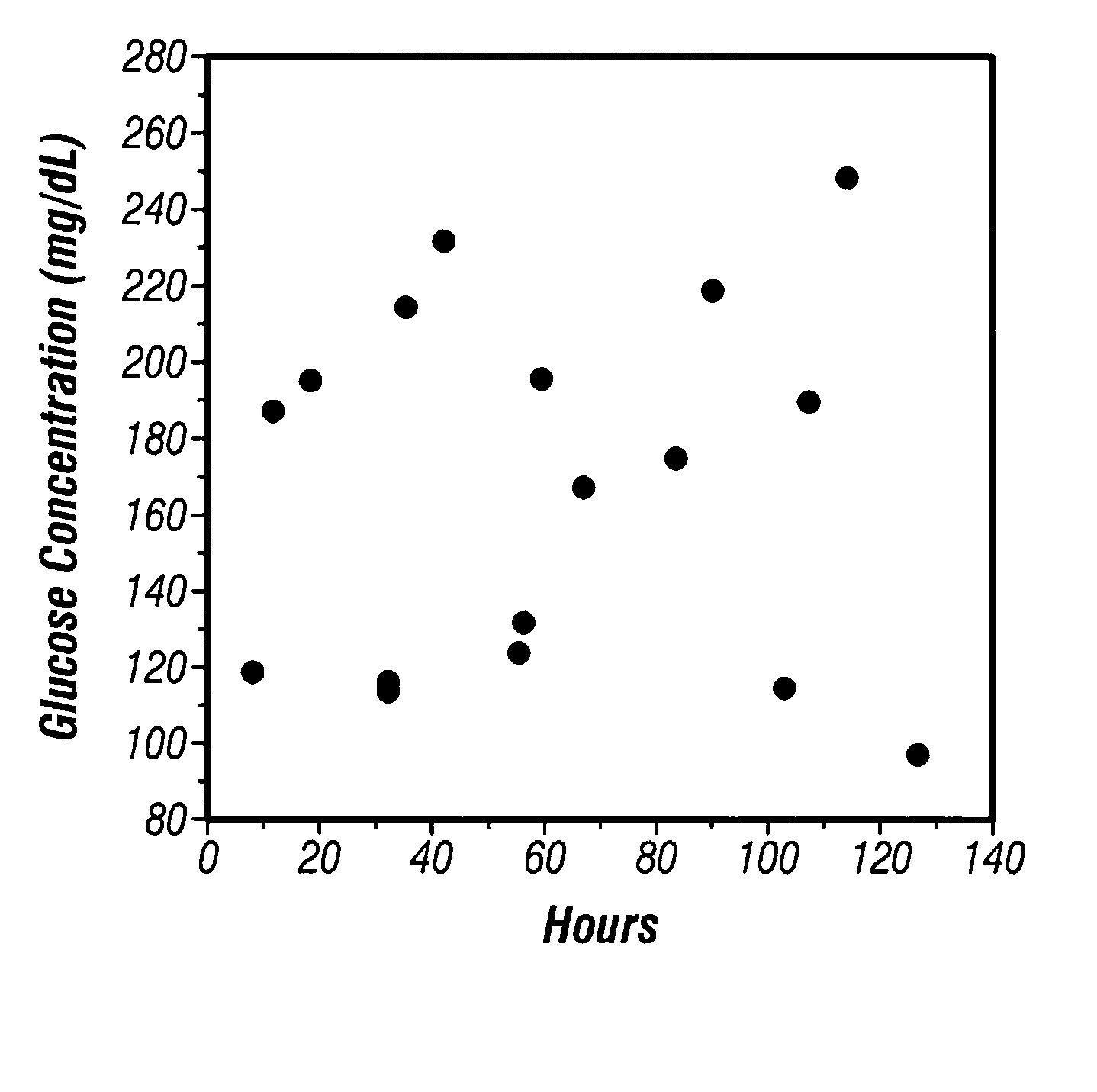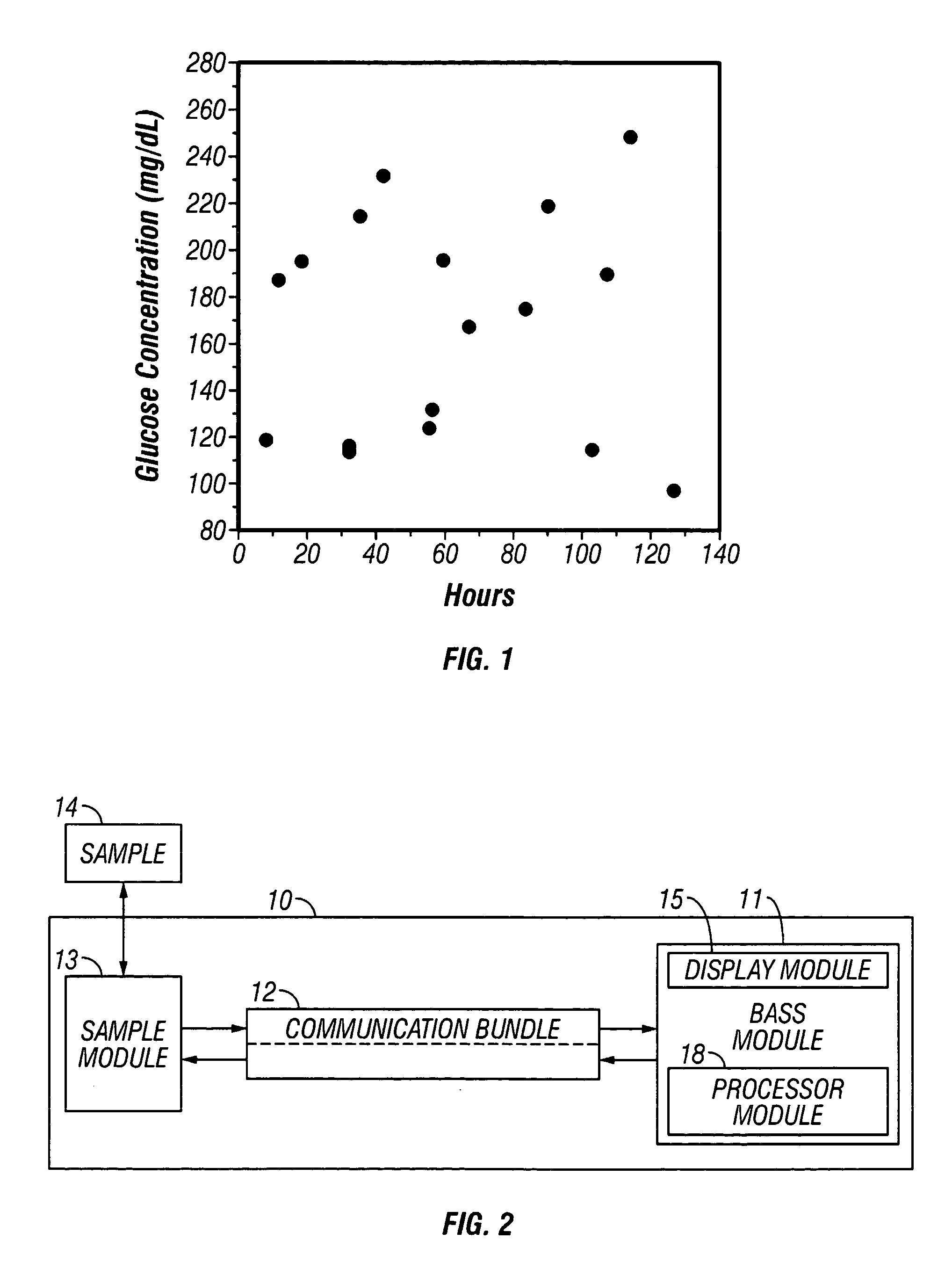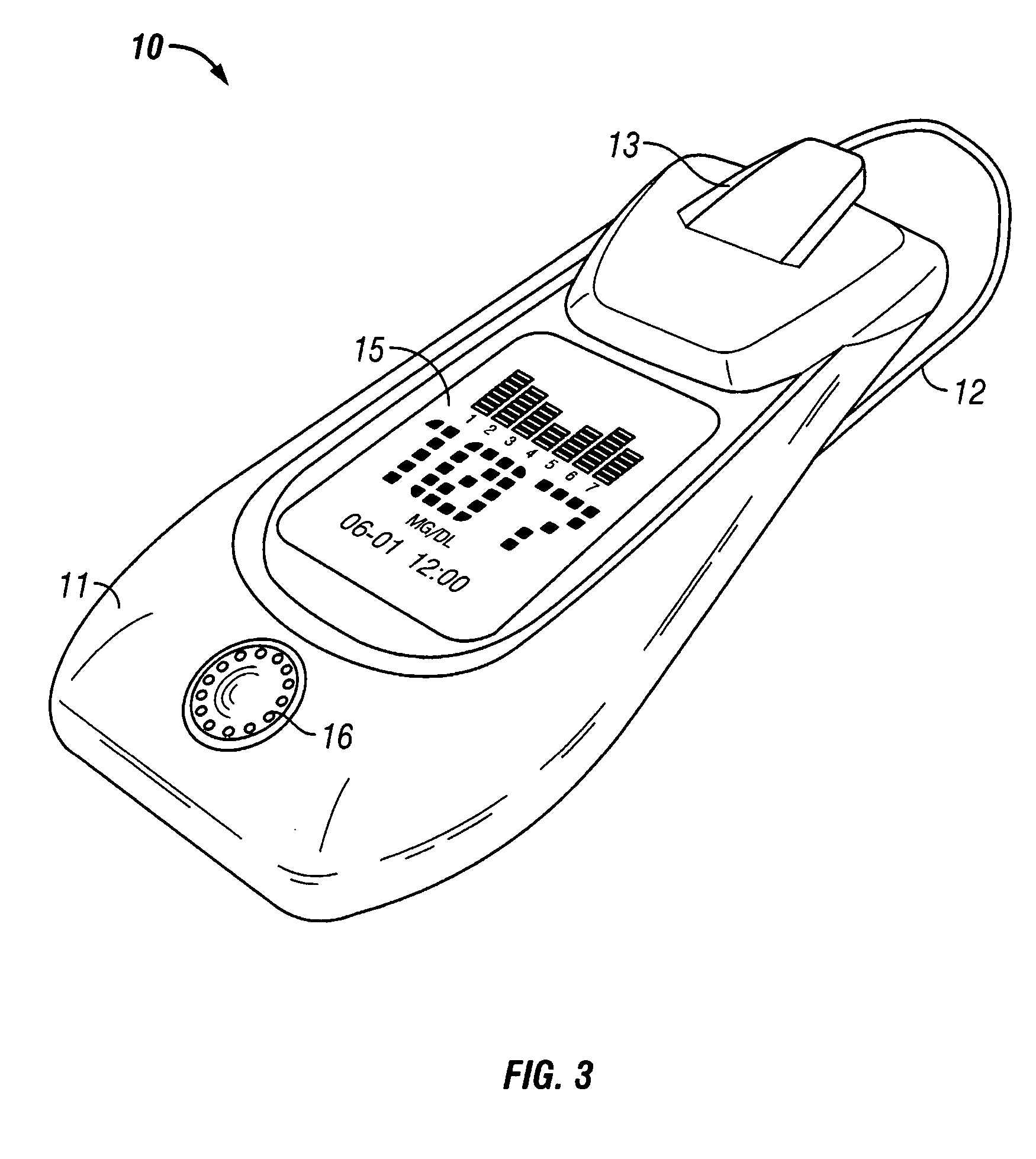Method and apparatus for presentation of noninvasive glucose concentration information
a glucose concentration and information technology, applied in the field of non-invasive glucose concentration information presentation methods and apparatuses, can solve the problems of current monitoring techniques that discourage regular use, diabetes is a leading cause of death and disability worldwide, and the production and use of insulin are abnormal, etc., to achieve the effect of readily determined and used, and conveying the underlying information
- Summary
- Abstract
- Description
- Claims
- Application Information
AI Technical Summary
Benefits of technology
Problems solved by technology
Method used
Image
Examples
example i
[0085] In a first example, an analyzer 10 contained in a single unit, the base module 11, communication bundle 12, and sample module 13 are all integrated together and are contained within or integrated onto a single containing unit.
example ii
[0086] In a second example, a base module 11 is separated from the sample module 13. Communication exists between the sample module 13 and base module 11 via a communication bundle 12. In varying embodiments, the communication bundle is wireless, carries electrical power, carries data, transmits energy or movement, and / or carries fluid. For example the communication bundle 12 carries feedback control signals, temperature sensing data, coupling fluid, light, data, and / or contains hydraulic fluid.
example iii
[0087] Referring now to FIG. 3, an example of a handheld analyzer 10 is presented. In this case the base module 11 is separated from the sample module 13 by a communication bundle 12. The sample module 13 docks into the base module when not in use or, optionally, for scanning an internal reference material 14. A graphical display module 15 is integrated into the base module 11. In the example presented, an optional audio output 16 speaker is presented.
PUM
| Property | Measurement | Unit |
|---|---|---|
| concentrations | aaaaa | aaaaa |
| concentrations | aaaaa | aaaaa |
| concentration | aaaaa | aaaaa |
Abstract
Description
Claims
Application Information
 Login to View More
Login to View More - R&D
- Intellectual Property
- Life Sciences
- Materials
- Tech Scout
- Unparalleled Data Quality
- Higher Quality Content
- 60% Fewer Hallucinations
Browse by: Latest US Patents, China's latest patents, Technical Efficacy Thesaurus, Application Domain, Technology Topic, Popular Technical Reports.
© 2025 PatSnap. All rights reserved.Legal|Privacy policy|Modern Slavery Act Transparency Statement|Sitemap|About US| Contact US: help@patsnap.com



